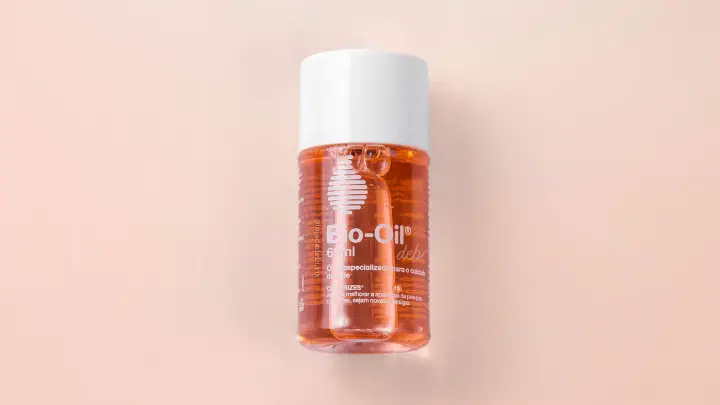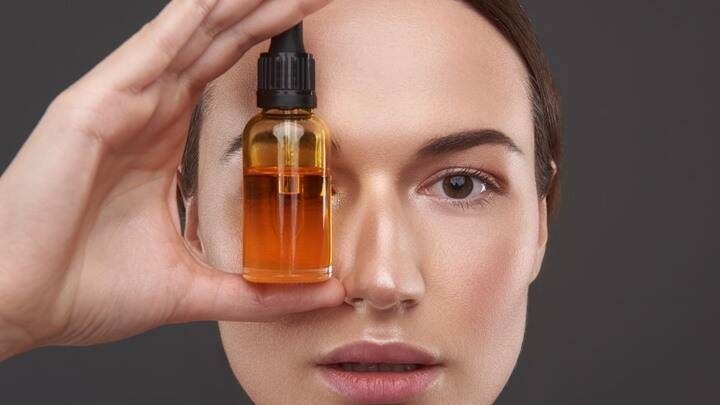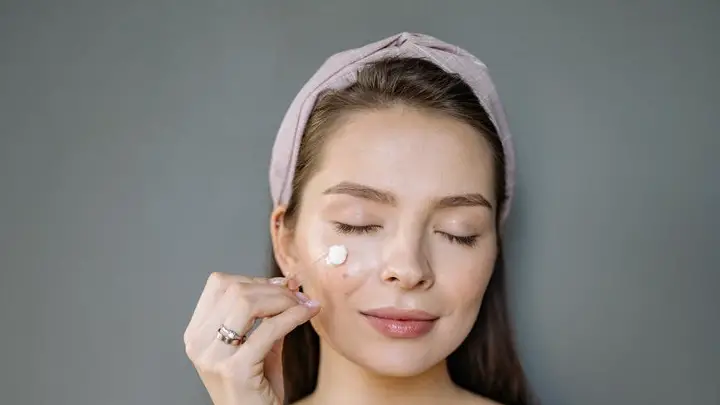Can you use glycolic acid with retinol? Is this against the skincare code?
You can use glycolic acid with retinol as part of your skincare routine, however, this is not without some buts.
Skincare can be quite confusing, and this is because there are so many products on the market. It makes a zillion questions run through your mind. Questions of what to use, how to use, and even what to use with what.
When an alpha hydroxy acid (AHA) like glycolic acid and a sensitive vitamin A in the form of retinol is a part of your routine, it can be quite a deal for you. However, there’s good news. You do not have to be confused anymore.
What Does Glycolic Acid Do for Skin?
Glycolic acid is an AHA that exfoliates your skin. Skincare products like cleansers, serums, chemical peels, and face masks incorporate this fruit acid in their formula. Glycolic acid has small molecules that penetrate your skin and enter your pores.
It loosens the bond between dead skin cells, oils, and anything clogging your pores. As a result, they become easy to lift off your skin and reveal rejuvenated skin and a brighter complexion. This benefit is best enjoyed by oily and acne-prone skin.
However, other skin types like normal and dry skin may use glycolic acid too. But this is based on their sensitivities and reactions. Furthermore, mature and aging skin is stimulated to restore collagen production which naturally slows down with age.
In other words, glycolic acid is a good skincare ingredient for acne treatment and anti-aging skincare routines. Dr. Dennis Gross, MD, says, “it gives skin a radiant glow, reduces the appearance of pores, fades discoloration, helps prevent and treat breakouts, and improves overall texture.”
Although an acid, you’ll find glycolic acid quite the moisturizer. Its humectant property keeps your skin hydrated and helps to smoothen fine lines and wrinkles. Overall, it improves the appearance of your skin and gives you an even tone.
What Does Retinol Do for Skin?
Retinol is the anti-aging wonder skincare ingredient. It generally describes OTC vitamin A-derived drugs, creams, and serums. Retinol is an active ingredient that can reverse already manifested signs of aging and even delay future appearances.
Consequently, it plumps your skin back to its youth. And its functions do not stop there.
Dr. Racheal Nazarian, a board-certified dermatologist says, “retinol works by decreasing melanin (or pigment production in the skin) and decreasing sunspots but is also capable of increasing collagen production in deeper layers of skin and helping to maintain the collagen and elastin already there”.
Retinol is an antioxidant. It neutralizes the effect of oxidative stress that may lead to the formation of free radicals in your skin. If retinol stops this from happening, it can maintain collagen levels and promote the synthesis of more.
In addition, this vitamin A derivative is very effective in addressing skin concerns like fine lines, wrinkles, and hyperpigmentation. As you age, your skin becomes dry and saggy. Retinol restores skin elasticity and brightens a dull complexion.
Can You Use Glycolic Acid With Retinol?
As mentioned earlier, glycolic acid and retinol are good actives for any skincare routine. However, using them together has some conditions.
This is because they are both sensitive ingredients with different pH ranges. A little interference can render one ineffective and be bad for your skin.
A board-certified dermatologist, David Lortscher, says something you should bear in mind. He says, “your skincare routine should include products that complement each other in order to avoid over-drying, over-exfoliating, or irritating the skin”.
If you want to use glycolic acid and retinol as part of your skincare routine, it is best to not layer them. Use them at alternating times of the day or on different days (which will be even better).
For instance, both ingredients make your skin photosensitive to UV rays. So, you would not want to have skin irritations after spending dollars and time on skincare.
In similarities, both ingredients have a reputation for rejuvenating skin, improving its appearance and tone, restoring youthfulness, and treating acne. However, each does this via a mechanism of action that tends to oppose the way the other does the same.
Let’s consider some factors that largely affect how you use glycolic acid with retinol.
Skin type and tolerance
Your skin type is a predominant factor in what skincare products and ingredients you use. While some skin types may tolerate glycolic acid and retinol, others will not.
Oily and acne-prone skin may experience a skin purge associated with breakouts while dry and sensitive skin types may dry out.
In essence, before you get to layering these ingredients, you may want to run a patch test of each to see how your skin will fare with them. If your skin seems to tolerate them well, you can start by alternating them on different nights and days.
Both ingredients penetrate deep into your skin to yield better results. However, this may increase your risk of having irritations. Moreover, they can damage your skin’s natural barrier, cause skin flares and even increase the rate of water loss.
pH values
Your skin has a natural pH value of about 4.7-5.5. This means that any product you’ll be applying should fall in that range or should not fall too far from these values.
Retinol is active at an optimum pH of about 5.5-6. Glycolic acid, on the other hand, is active at a pH of about 3.5-3.8 which is very low compared to retinol’s pH.
Layering retinol over glycolic acid will render both ingredients ineffective. Moreover, you could expose your skin to excessive dryness. Consequently, your skin is irritated and flaking.
How each works
Both ingredients work to rejuvenate your skin and improve its appearance and texture. While glycolic acid is an exfoliator, retinol increases cell turnover. Yet, these two benefits are essential for your skin.
If you apply both ingredients at a time, glycolic acid will slough off dead skin cells from the surface of your skin to reveal a better complexion. At the same time, retinol will increase cell turnover. This contrast can be counterproductive.
How to Use Glycolic Acid With Retinol
You should use glycolic acid and retinol at different times of the day and on different days. This allows your skin to absorb and relish the benefits of each ingredient before you apply the other.
For instance, after exfoliating your skin with glycolic acid in the morning, rather than using a retinol serum or cream, carry on with other ingredients. However, layer a sunscreen of at least SPF 30 to protect the exposed sensitive layer of skin from the harsh UV rays.
Then, at night, you can use a retinol serum or cream without using any glycolic acid-based product beforehand. Also, on any other day, you may rather use a hyaluronic acid cleanser or toner instead of one with glycolic acid before you use a retinol product.
Furthermore, because of the sensitivities of using retinol, it is best used at night. If you are a retinol beginner, introduce it slowly into your skincare routine. It allows your skin to gradually acclimatize to this active ingredient.
When your skin does not get irritated by retinol anymore, you can increase your usage frequency. Then, you can begin to alternate its use with glycolic acid.
Additionally, on the days when you use both ingredients in your skincare routine, avoid any other AHA or BHA. Otherwise, it can be too drying for your skin and lead to skin irritations.
Side Effects of Using Glycolic Acid With Retinol
When used separately, glycolic acid and retinol can dry out your skin. Moreover, they make your skin photosensitive and expose you to hyperpigmentation scars. So, layering them can aggravate these potential side effects and worsen your skin conditions.
People with oily or acne-prone skin may experience a breakout of pimples, blackheads, and dark spots. The excessive cell turnover may cause redness and eventual flaking and peeling of your skin. This happens especially with dry and sensitive skin types.
FAQs
Can you use glycolic acid in the morning and retinol at night?
Yes, you can. Because AHAs and retinol do not go so well, you should alternate using them in your skincare routine. Use a product that contains glycolic acid in your AM routine and a retinol serum or cream in your PM routine.
This helps to reduce your chances of skin irritations and maximize the benefits of each ingredient in your skincare product.
Can you use glycolic acid toner with retinol?
You can use glycolic acid toner with retinol (if you do not apply them simultaneously). Use glycolic acid toner in the morning and a retinol cream or serum in the evening. This way, you minimize skin irritations and allow your skin to get the best of each product.
In addition, glycolic acid toner opens your skin to receive retinol, an active ingredient. Also, it enhances its effectiveness in your skincare routine.
Is retinol better than glycolic acid?
No, it is not. Retinol and glycolic acid are good ingredients, whether together or separately. How you use them is what matters the most. Both ingredients are good for acne and anti-aging treatment.
Using retinol and glycolic acid in your skincare routine will not be a bad idea. Most importantly, do not overuse any of them, and do not use them simultaneously.
Can you use glycolic acid with retinol to treat acne?
Glycolic acid and retinol are great ingredients for acne and its scars. They both promote skin rejuvenation. Glycolic acid dissolves the bond between dead skin cells and excess oil and lifts them off your skin. This prevents acne breakouts and treats existing acne.
Retinol penetrates deep into your skin and stimulates collagen synthesis, promoting cell turnover. Consequently, acne scars fade, and your skin is restored to an even tone. However, you should not use them simultaneously. Otherwise, you might experience a breakout of pimples.
Conclusion
Skincare has its dos and don’ts. These rules help you apply your ingredients correctly and get the best of them. If you mix ingredients that do not complement each other, you’ll not only be wasting a good deal of time, but you’ll also expose your skin to irritations.
Active ingredients like glycolic acid and retinol are a pair that needs to be well-considered before incorporating them into your skincare routine. Although, they are great ingredients for all skin types, layering them can have potential side effects on your skin.
To get the best of glycolic acid and retinol, alternate their usage. Also, slowly introduce retinol into your routine. Most importantly, pay attention to your skin and only use the necessary ingredients at a time.
Thanks for reading.
Read articles that answer your relevant questions on how to use skincare ingredients on Serum 101.






